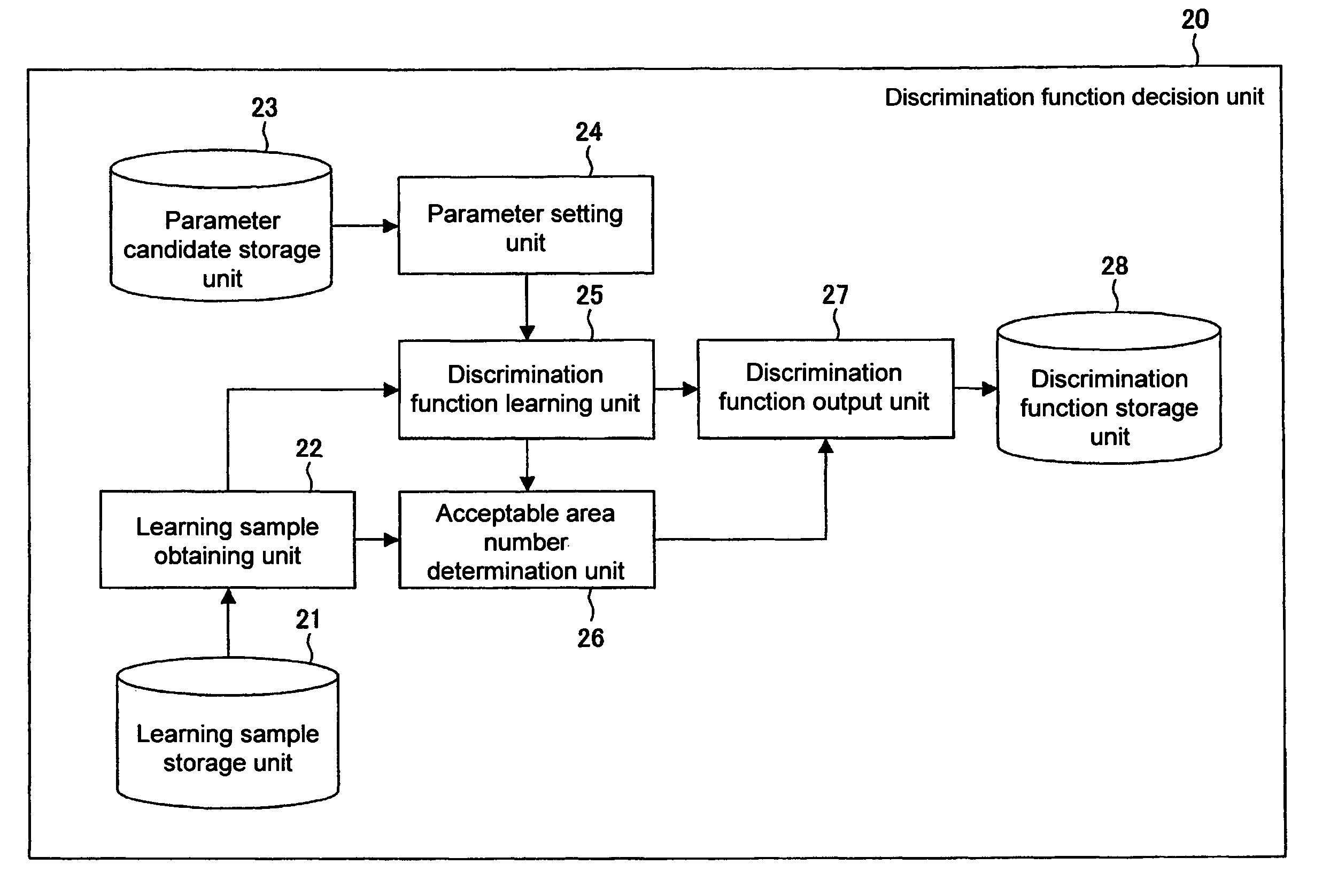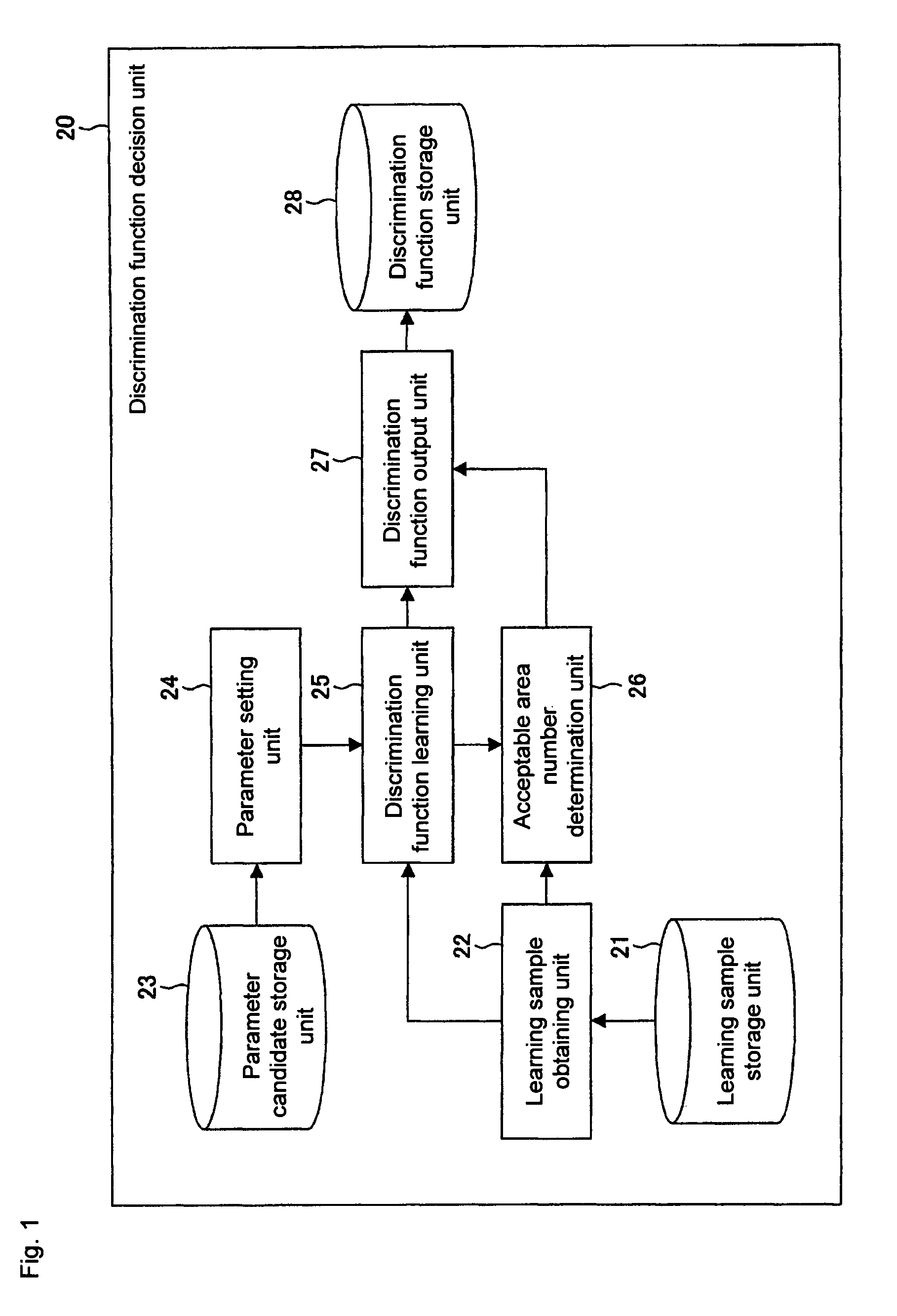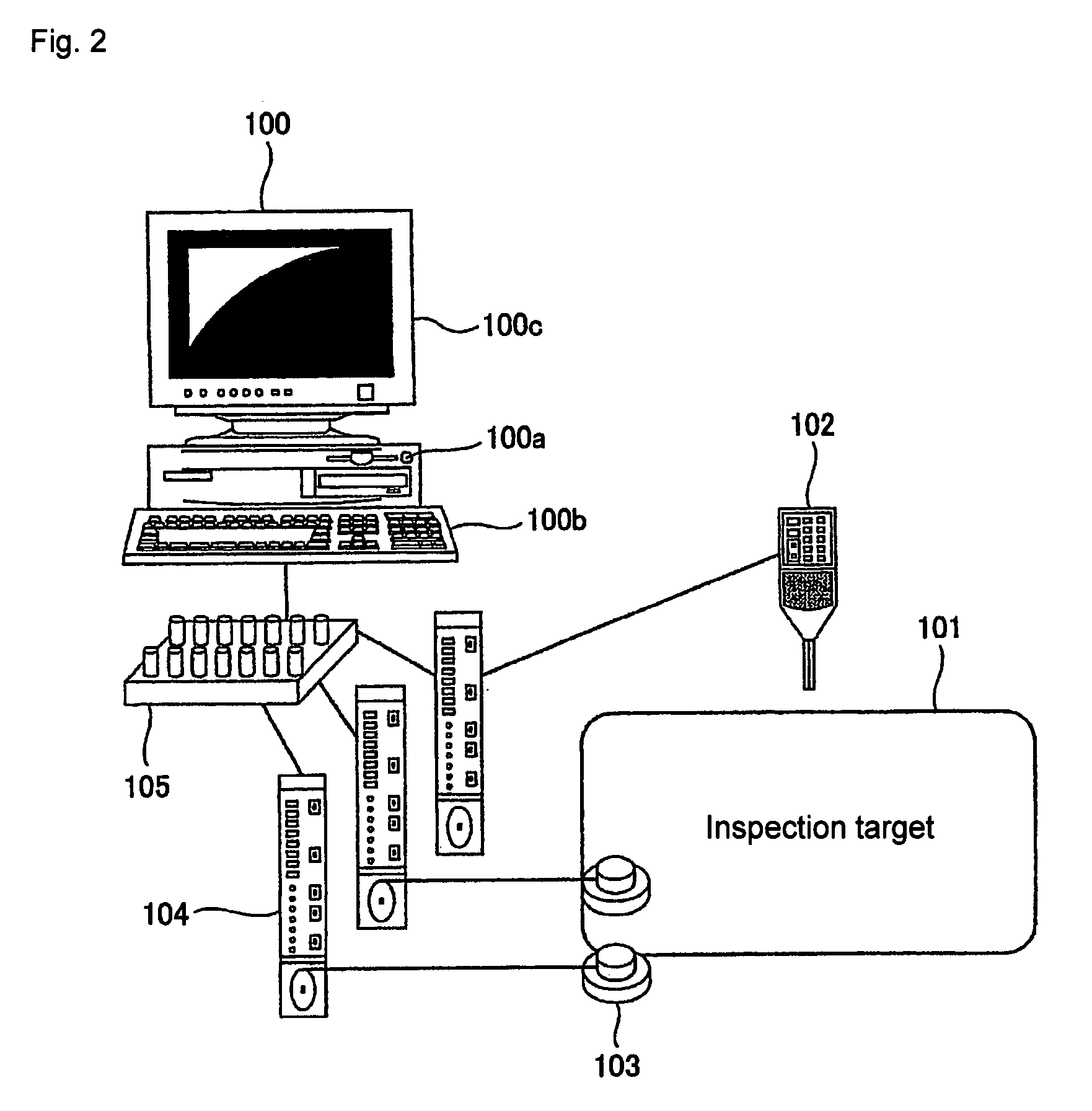Inspection apparatus
a technology of inspection apparatus and inspection chamber, which is applied in the direction of image enhancement, structural/machine measurement, instruments, etc., can solve the problems of waste of acceptable products, difficulty in managing sensory inspection, and uncomfortable sound associated with defects
- Summary
- Abstract
- Description
- Claims
- Application Information
AI Technical Summary
Benefits of technology
Problems solved by technology
Method used
Image
Examples
Embodiment Construction
[0069]Embodiments of the present invention will be described below with reference to the drawings.
[0070]FIG. 2 shows a schematic configuration of the inspection apparatus 100 according to one or more embodiments of the present invention. FIG. 1 shows a functional block diagram of a configuration of a discrimination function decision unit 20 included in the inspection apparatus 100.
[0071]The inspection apparatus 100 extracts a characteristic value from inputted measurement data of an inspection target. On the basis of the extracted characteristic value, the inspection apparatus 100 discriminates the acceptable sample from the defective sample by the non-parametric one-class discrimination. The inspection apparatus 100 includes the discrimination function decision unit 20. The discrimination function decision unit 20 has the following functions: (1) A function of determining whether or not the discrimination function used in the non-parametric one-class discrimination forms a single a...
PUM
 Login to View More
Login to View More Abstract
Description
Claims
Application Information
 Login to View More
Login to View More - R&D
- Intellectual Property
- Life Sciences
- Materials
- Tech Scout
- Unparalleled Data Quality
- Higher Quality Content
- 60% Fewer Hallucinations
Browse by: Latest US Patents, China's latest patents, Technical Efficacy Thesaurus, Application Domain, Technology Topic, Popular Technical Reports.
© 2025 PatSnap. All rights reserved.Legal|Privacy policy|Modern Slavery Act Transparency Statement|Sitemap|About US| Contact US: help@patsnap.com



